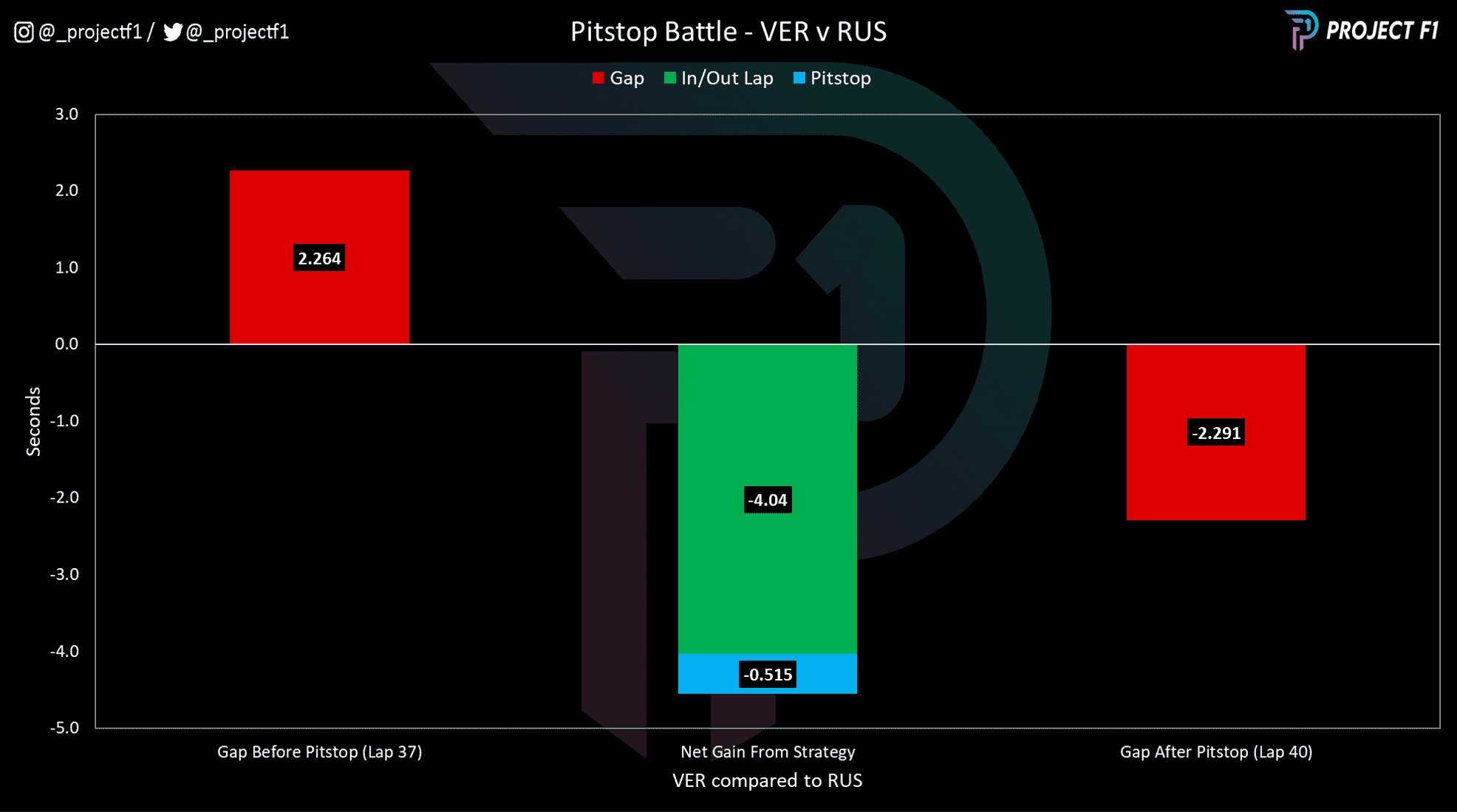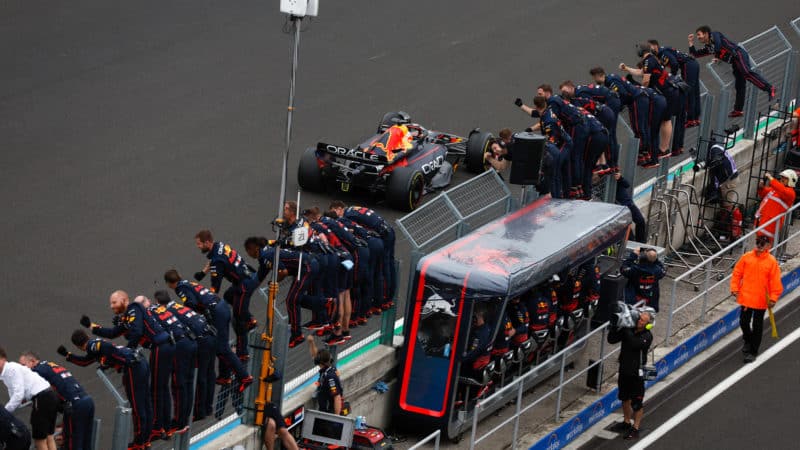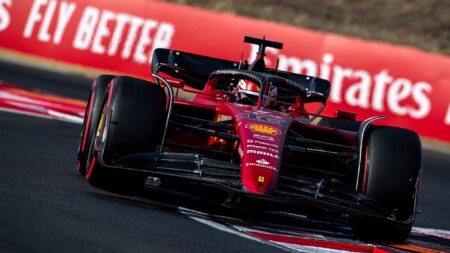Mercedes had deduced that the hard compound would not be a good race tyre based on Friday running, while Red Bull had arrived at a similar conclusion – reinforced by its drivers’ comments on the laps to the grid ahead of the race. The colder temperatures on Sunday played an important role in these developments. These factors served as a deterrent from taking the conventional approach.
Red Bull opted to loosely follow Pirelli’s first recommended strategy of soft-medium-medium, while Mercedes went somewhere in the middle. Given Russell was the pole-sitter, it made sense to front-load the aggression by starting on the soft while Hamilton took the alternate strategy to make the most of a light car and better rubber towards the end of the race by starting on the medium and finishing on the soft.
But a lot can happen between the point A and B of starting and finishing a race. This is where the agility of the strategy team becomes the crucial factor.
Chart 2: Race story – cumulative delta plot

Verstappen, Hamilton and Perez all had a strong start to the race, while Russell was initially able to hold both Ferraris at bay.
But the decline in his pace is evident in the graph above, which shows drivers’ average lap time over the course of the race as it progressed, compared with a 1min 24sec baseline.
Russell’s soft tyres were fading and, while Ferrari’s comments to box Sainz may have been a catalyst, lap 16 was the right time for Mercedes to bring its leading driver into the pits.
It was a similar story for Verstappen, who had failed to make the same inroads on Hamilton as he did prior to suffering a brief sensor issue that hindered his progress. By this time the soft tyres had seen their best days and so pitting also made sense for the championship leader.
Not long after this, Carlos Sainz was in the pits himself since his pace was starting to fade despite starting on the more durable medium tyre. It was a different story for Charles Leclerc, who was able to extend the stint while maintaining competitive pace.
Chart 3: Pitstop gain and loss

Both Russell and Sainz had slow first stops, so there was nothing to be gained on that front. However the delay in pitting Sainz meant that Russell was able to generate enough of an advantage to actually extend his lead over his rival by virtue of the undercut, as seen above.
Turning our attention back to Chart 2 and we can see that Hamilton comes into the pits a little later on and slots into some clean air between the two Red Bull drivers. This allows him to get his head down and do the hard yards to reap the rewards later in the race.
Leclerc pits later on still, but is able to undercut Sainz – partially due to his team-mate’s slower stop but also due to the Monégasque’s better pace. But Leclerc is not able to get the jump on Russell, who matches his pace, just as he did in the first stint for Sainz, who struggled to get the longevity out of the medium tyre.
Chart 4: Trend race pace compared

With all the major players and their first pitstops accounted for, let’s take a look at how the race pace played out – especially for the all-important second stint.
The drivers were closer to their expected running positions at this time, and so their pace was more representative of where they should be.
Leclerc was fast, but was compromised by the pace of Russell. The Brit did well to hold Leclerc back a for as long as he did.
Even when Leclerc was eventually unleashed, Russell was able to keep Sainz at bay, despite the pace differential of the two cars on the same tyre – remembering that the Mercedes’ earlier defence of Sainz was helped by the grip from the soft tyre.
Hamilton and Verstappen both chewed away at the gaps ahead thanks to their strong and consistent pace – particularly for the former who was, at times, the fastest man on track amongst the top three teams.
Hamilton bedded down for the long stint, extending it considerably while Red Bull looked to throw down the strategic gauntlet.
Chart 5: pit stop gain and loss II

Red Bull had been watching the gap to Russell and saw an opportunity to get position over him via an undercut. Furthermore, with Verstappen having run a soft-medium strategy, and Ferrari being on the medium-medium, Red Bull looked to put the Scuderia in a difficult place by going for an undercut at an uncomfortable time (i.e. too early for the soft tyre). But it is likely that this bait was secondary against the primary objective of clearing Russell.
Chart 5 above shows the efficacy of Verstappen’s undercut on Russell, comfortably overturning the gap.





